No products in the cart.

On Thursday, July 5, 1984, an attempt to kidnap Nigeria’s Minister of Transport and Aviation, Alhaji Umaru Dikko, was foiled by the British after he had been drugged and put in a crate to answer for corruption charges laid against him. Dikko had fled Nigeria following the military coup that aborted the Alhaji Shehu Shagari government on December 31, 1983. He had been accused of stealing $4 billion of government money.
For the sake of many of us who did not witness the event of the time, I visited the archives to research more on Nigeria’s most diplomatic blunder to date. This shameful episode of Nigerian history is known as the Dikko Affair.
Who Was Umaru Dikko?
Umaru Dikko was born in Wamba, present-day Nasarawa State on December 31, 1936. He had his secondary education at the prestigious Barewa College, in Zaria, Kaduna State, and took a Bachelor of Science degree in Mathematics graduating with First Class Honours from Birkbeck College, University of London, and worked for some time with the BBC’s Hausa-language service.
Contents
In 1967, he was appointed a commissioner in the then North Central State of Nigeria (now Kaduna State) and was also secretary of a committee set up by General Hassan Katsina, the first military governor of Northern Nigeria, to unite the Northerners after the July countercoup in 1966.
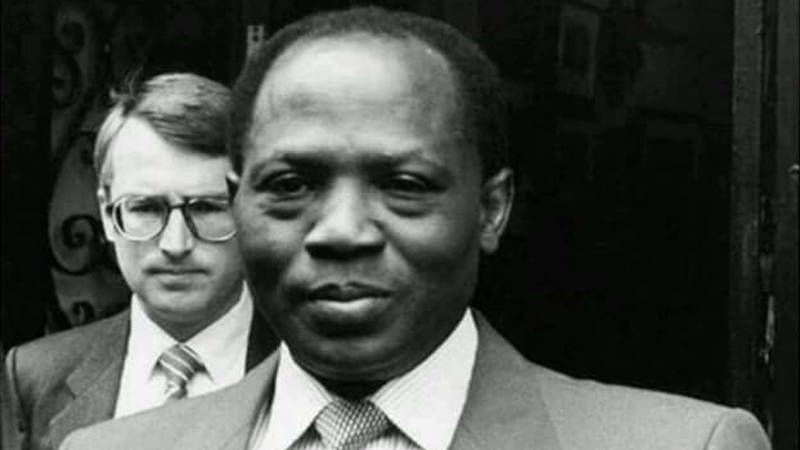
In 1979, he was made President Shehu Shagari‘s campaign manager for the successful presidential campaign of the National Party of Nigeria. During the nation’s Second Republic (1979-1983), he played prominent roles as transport minister and head of the presidential task force on rice until a military coup, on his birthday in 1983, overthrew the Shagari’s government.
Umaru Dikko and a host of other politicians fled into exile in London. The Muhammadu Buhari-led new military regime accused him of large-scale corruption while in office, in particular of embezzling millions of dollars from the nation’s oil revenues.
Well, that’s that about the man…. Now, let’s look at the event of July 5, 1984.
The 1983 Coup
On December 31, 1983, martial music played for the first time since February 13, 1976, on Nigeria’s federal radio service. It signalled one thing. The khaki boys, as Nigerian soldiers were then called, had returned.
For example, Margaret Thatcher, Britain’s Prime Minister threatened to publish the names and account details of all Nigerians with bank accounts in the United Kingdom. However, Buhari and his military colleagues bowed out as this would have certainly destroyed the credibility of these military officers as many of them were believed to maintain foreign bank accounts, especially in the UK.
President Shehu Shagari’s government had just been overthrown in a military coup and a new military government led by Major-General Muhammadu Buhari was established.
On January 2, 1984, Buhari reeled out the names of former government officials accused of a variety of crimes. Unsurprisingly, Umaru Dikko topped the list. He was accused of embezzling several million dollars in oil profits from the national treasury.

Umaru Dikko had been a vocal supporter of Shagari and, to his detractors, was targeted to be a scapegoat for the Shagari administration’s “many sins”. But as I wrote earlier, Dikko fled to London through the Republic of Benin, along with his Private Secretary, Elizabeth Hayes. They journeyed to Togo and took a flight to London from Lome. The minister had become “Nigeria’s most wanted man”.
Back in Lagos, government officials started plotting on how to get not just Umaru Dikko but the allegedly stolen billions of dollars. The extraordinary plan was to kidnap the erstwhile minister, drug him, stick him into a specially made crate and put him on a plane back to Nigeria – alive.
The Mossad (Israeli) Connection
Many of Umaru Dikko’s allies who had also served in Shagari’s government and were prevented from leaving the country were arrested and jailed for corruption – some as high as 300 years in prison. They were tried and convicted by special military tribunals established under the Recovery of Public Property Special Military Tribunals of 1984.
The Buhari regime made unsuccessful attempts to recover stolen wealth by corrupt politicians stashed in foreign banks. However, the Western governments refused to cooperate with Buhari.
For example, Margaret Thatcher, Britain’s Prime Minister threatened to publish the names and account details of all Nigerians with bank accounts in the United Kingdom. However, Buhari and his military colleagues bowed out as this would have certainly destroyed the credibility of these military officers as many of them were believed to maintain foreign bank accounts, especially in the United Kingdom.
So, the government thought of another option – Mossad.
Although Israel, in 1984, did not have formal diplomatic relations with Nigeria, there were clandestine ties between the two nations (Nigeria was an important source of oil for Israel while Israel in return was a significant supplier of arms to Nigeria) and the Israeli National Intelligence Agency, Mossad, was recruited to locate and bring Umaru Dikko back to Nigeria to stand trial.
As a result, Mossad sources across Europe were mobilised, but all failed to locate any trace of Umaru Dikko. However, Mossad Director-General Nahum Admoni suspected that Dikko was probably in London, which had become a safe haven for exiled Nigerian critical of the Buhari-led military regime.
Accompanied by Nigerian security service agents led by ex-Nigerian Army Major Mohammed Yusufu, the Mossad agents travelled to London. Yusufu and the rest of his Nigerian team rented an apartment on Cromwell Road and posed as refugees seeking political asylum from the new regime while the Mossad agents rented rooms in hotels catering to tourists from Africa where they posed as anti-apartheid activists.
Many of Dikko’s allies who also served in Shagari’s government and were prevented from leaving the country were arrested and jailed for corruption. Some as high as 300 years in prison; they were tried and convicted by special military tribunals established under the Recovery of Public Property Special Military Tribunals of 1984.
Working separately, the two teams moved among the Nigerian expatriate community in London, gradually narrowing their search to West London, to the area around Hyde Park, where many wealthy Nigerian exiles lived. They combed the electoral registers freely available in the area’s town halls, yet found no trace of Dikko.
The Umaru Dikko Kidnap
On June 30, 1984, a Mossad agent driving down Queensway “miraculously” spotted Umaru Dikko. The agent parked his car, and then secretly followed Dikko to his Porchester Terrace house on foot. Admoni was alerted immediately and subsequently ordered house surveillance. From that moment on, Dikko’s house was continuously monitored, as the Nigerians planned a kidnapping operation using their London embassy as a base.
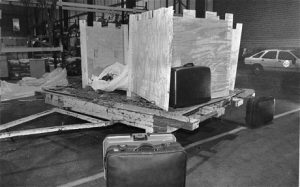
Meanwhile, the Mossad had recruited Dr Levi-Arie Shapiro, an Israeli doctor who was a consultant anaesthetist to fly to London and participate in the sting operation. Shapiro’s task would be to inject Dikko and insert an endotracheal tube to prevent him from choking on his vomit while he was being transported in a container.
A Nigeria Airways Boeing 707 arrived from Lagos at Stansted Airport late in the evening of July 4, 1984. The aeroplane had arrived Stansted empty and the British authorities had been notified by the pilot that the aircraft had arrived to pick up diplomatic baggage from the Nigerian embassy in London.
Several Nigerian security guards were on board, who proudly described themselves as such and said they were there to guard the luggage. Their presence was then reported to the Special Branch of Scotland Yard.
On July 5, 1984, the next day, Umaru Dikko was kidnapped in front of his home while he was out for a walk and taken away in a van driven by Yusufu. He was then drugged into unconsciousness by Shapiro. Luckily for Dikko, his abduction was witnessed by his secretary, Elizabeth Hayes, who quickly alerted the authorities.
How the Umaru Dikko Kidnap was foiled
However, Dikko’s abductors goofed and nemesis caught up with them. The necessary documentation that would have ensured that the cargo could not be inspected was not provided. Also, the crates were not labelled as diplomatic bags, as required by Article 27(4) of the 1961 Vienna Convention on Diplomatic Relations. Dikko and the doctor who drugged him, Shapiro, were placed in one crate while Mossad agents Alexander Barak and Felix Abithol occupied a second.
As a result, airport officials who had received an all-points bulletin alerting them to the abduction while the crates were being processed at the airport were able to open the crates without violating the convention and foil the kidnapping as well as arresting them all. Inside the crate, they found Umaru Dikko lying on his back in the corner of the crate, who was now unconscious, but the Israeli anaesthetist was very much awake.
Dikko had no shirt on, but he had a heart monitor on him, and a tube in his throat to hold his airway open. He had no shoes and socks on, just handcuffs around his ankles. There was also the Israeli doctor, obviously for keeping him alive. Though he was uninjured, Dikko was taken to a hospital for treatment.
Shapiro, Barak, Abithol, and Yusufu were convicted and sentenced to prison terms of 10 to 14 years; however, they were released after serving between six to eight and a half years and were quietly deported from Britain. In retaliation, the Nigerian government arrested two British engineers accusing them of stealing aircraft and gave them a 14-year prison sentence.
The aftermath of the Umaru Dikko Kidnap
In the aftermath of the affair, the Nigerian government filed a formal extradition request for Dikko, but the British rejected it. This affected Buhari’s war against the Shagari-led government’s corruption as the British government also rejected his requests to extradite other politicians, like Adisa Akinloye and Richard Akinjide, who were wanted in the country on charges of corruption and living in exile in the United Kingdom. Thus, Buhari’s fight against corruption was severely weakened.
To this day, the Nigerian and Israeli governments never admitted any connection to the incident. Nevertheless, the British government immediately expelled two members of the Nigerian High Commission in London, including the High Commissioner, as diplomatic relations with Nigeria were broken off for two years until 1986 after Major-General Ibrahim Babangida took over the reins of government in a palace coup on August 27, 1985. You can watch the full video here.
If you liked this article, then please subscribe to our YouTube Channel for interesting historical videos and follow us on all our social media handles. Don’t hesitate to as well share this article with your friends.
You can also get Ayomide Akinbode’s latest historical novels on Amazon, Rovingheights, and Okadabooks.
Sources
Keleny, A. (2014, July 2). Umaru Dikko: Politician who was kidnapped by agents of the Nigerian government then discovered in a crate at Stansted Airport. Retrieved from https://www.independent.co.uk/news/obituaries/umaru-dikko-politician-who-was-kidnapped-agents-nigerian-government-then-discovered-crate-stansted-airport-9580261.html
Last, A. (2012, November 12). The foiled Nigerian kidnap plot. Retrieved from https://www.bbc.com/news/magazine-20211380
Olayiwola Abegunrin (2003), Nigerian Foreign Policy Under Military Rule, 1966-1999. Pages 127-130.

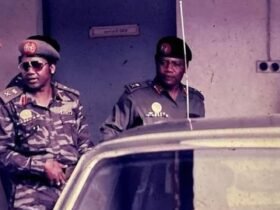
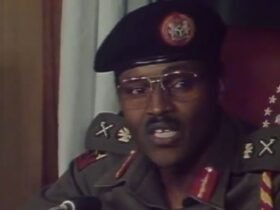
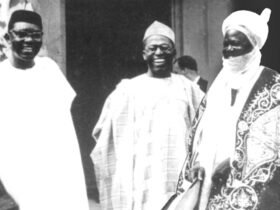
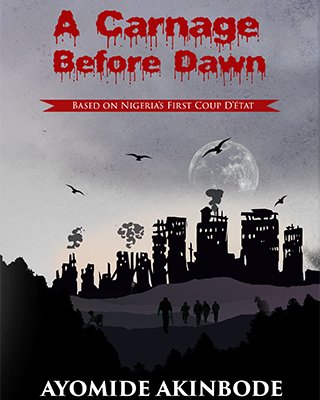
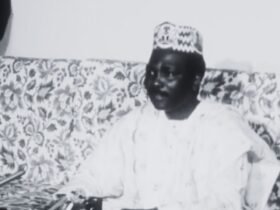
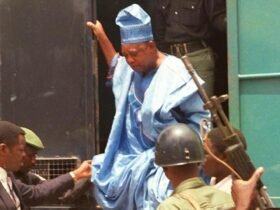

What’s the gull name of the “Yusufu” guy
quite enriching and precisely detailed
Thanks…